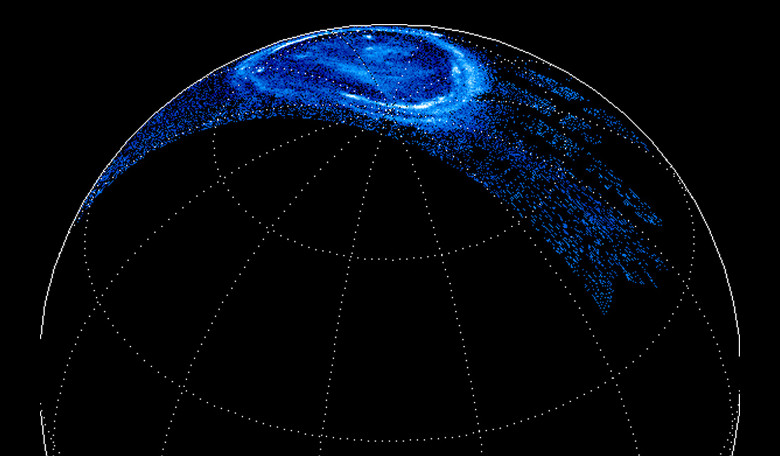On Earth, the northern lights are a spectacular to behold and the physics behind them are well understood by scientists. However, how the most power auroras in the solar system are generated - those on Jupiter – is still quite a mystery, despite recent data from Juno.
Jupiter has the most powerful auroras in the solar system. Recent data collected by the ultraviolet spectrograph and energetic-particle detector instruments aboard the Juno spacecraft show that powerful electric potentials, aligned with Jupiter's magnetic field, accelerate electrons toward the Jovian atmosphere at energies up to 400,000 electron volts.
By comparison, the stunning snake-like northern and southern lights seen in places like northern Europe, Alaska and Canada need just several thousands of volts.
However, while these large electrical potentials on Jupiter – up to 10 to 30 times higher than the largest auroral potentials observed at Earth – help generate the auroras, what scientists haven’t quite figured out, is why they are observed only sometimes and are not the source of the most intense auroras, as they are on our planet.
"At Jupiter, the brightest auroras are caused by some kind of turbulent acceleration process that we do not understand very well," said Barry Mauk of the Johns Hopkins University Applied Physics Laboratory, Laurel, Maryland. "There are hints in our latest data indicating that as the power density of the auroral generation becomes stronger and stronger, the process becomes unstable and a new acceleration process takes over. But we'll have to keep looking at the data."
Mauk who leads the investigation team for the APL-built Jupiter Energetic Particle Detector Instrument (JEDI) onboard Juno, views Jupiter as a missing link in our knowledge to understanding how more distant astrophysical systems accelerate particles to such immense energies.
“Jupiter is the link between the nearby space environments we study at planets like Earth, and distant astrophysical systems where magnetic fields hold sway, such as early-stage star forming regions, and hyper-energetic radiation regions like the Crab Nebula. Juno is not only going to help us better understand Jupiter, it’s going to help us better understand the universe around us and our place in it.”
Understanding what forces drive Jupiter's auroras also has practical implications in our own planetary backyard. "The highest energies that we are observing within Jupiter's auroral regions are formidable. These energetic particles that create the auroras are part of the story in understanding Jupiter's radiation belts, which pose such a challenge to Juno and to upcoming spacecraft missions to Jupiter under development," said Mauk.
For those unable to view the dazzling delights of Jupiter’s auroras, those in enviable places in the northernmost and southernmost latitudes, could be witness to some striking auroras here on Earth, as the Sun has recently emitted particularly strong solar flares.
It is unclear if the ensuing solar particles will generate the intense geomagnetic storms that are predicted or not, so keep an eye out here to see if they are coming to a town near you. And soon.











